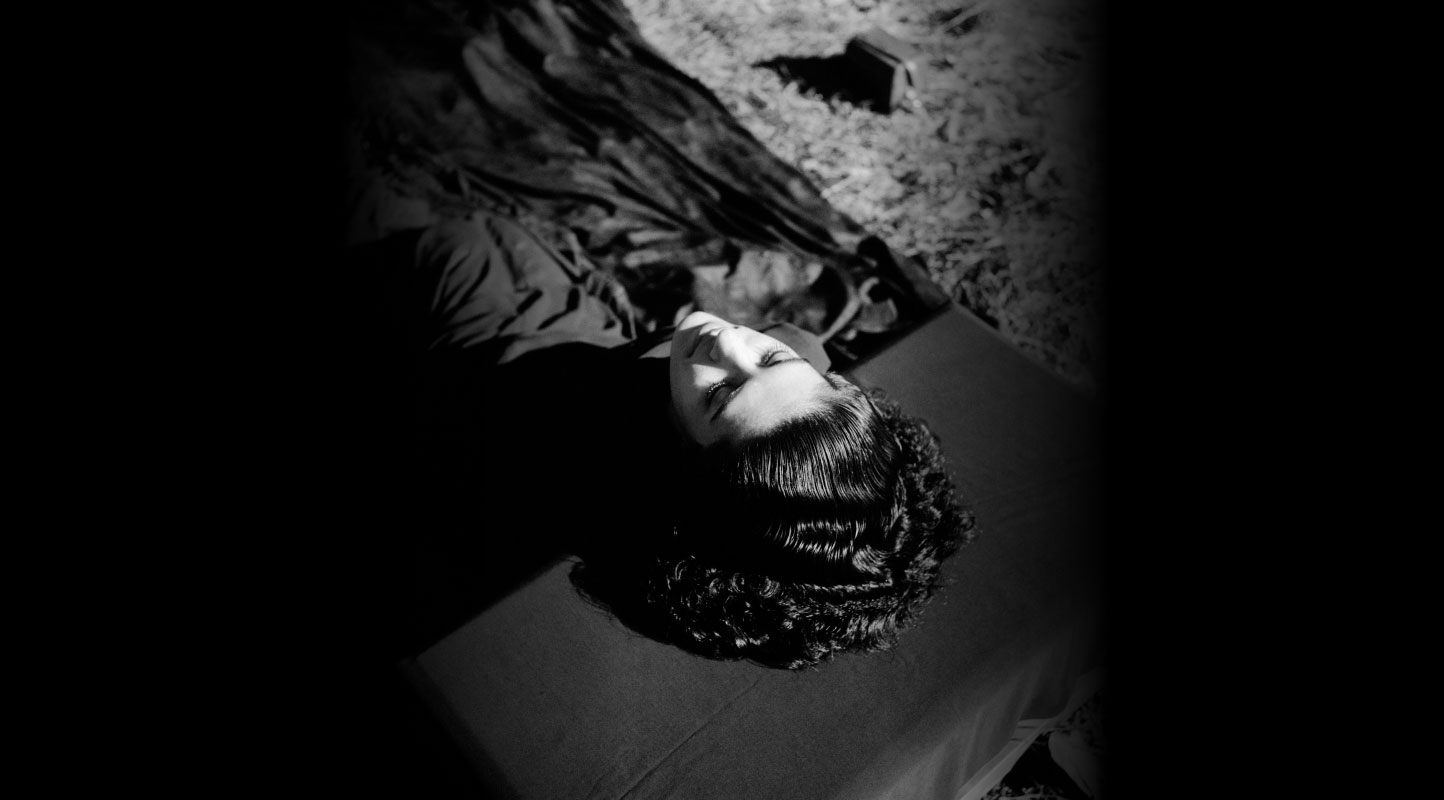On the Aldona Video Club: In Conversation with Kapil Das and Grant Davis
The Aldona Video Club (AVC) is an ongoing film project that began in 2018 as a camera test. Founded by Kapil Das and Grant Davis, AVC attempts to blend traditional narrative modes of filmmaking with their parallel interest in more subversive forms of cinema and moving images. While being attentive to theoretical questions and concerns around cinema, AVC’s work also places equal importance on humour, playfulness and, above all, the pleasure of the audience.

Part of a curated screening titled 'Women, Dreams and Desires.'
Taking its name from the quaint Goan village of Aldona, which is known for both its agricultural origins and its architectural history, AVC pays keen attention to the landscape and ethos of Goa. At the 9th edition of the Serendipity Arts Festival held in Goa from 15–22 December 2024, AVC curated a community-sourced and artist-driven film programme, showcasing obscure archival films, personal videos, local productions and recordings from Goan communities. Screened as a dynamic mix of scheduled presentations and spontaneous encounters across various locations in Panjim, these visual stories served as explorations of both film and space. In this edited conversation, AVC founders Kapil Das and Grant Davis speak with us about their practice as filmmakers and curators, their response tothe topography of Goa and audience responses to their choice of space for film screenings.

Part of a curated screening titled 'Women, Dreams and Desires.'
Radhika S (RS): Can you please tell us how you started?
Grant Davis (GD): What you (Kapil Das) said, it started as a lens test. We were testing some cameras and we had space. With one actor, we would go around and shoot things really simply. One person carried one bag, someone carried the tripod and there was no sound recording. It was very minimal—not like industrial filmmaking—there were just a few of us.
Kapil Das (KD): It is like a hobby.
GD: Yeah, we used to do one shot a day.
KD: Yeah, one shot a day, more or less every day for a few months, with a few breaks.
GD: With a process like that, you could make a feature film over many months with minimal resources—that was the idea. So that is how it started.
KD: We do not do this all the time. We love taking breaks from it. It is also very attuned to the seasons. So, we do not do anything during the monsoon. We only start after the rainy season, when the weather is better. Otherwise, we do our own things through the year, and then we get together toward the end of the year for some interventions. This year, we were invited to curate screenings for the public, which, again, is something we have always done for ourselves. The geographical nature of Goa and where we are—with the kinds of public spaces and accessibility that are available—seemed like a perfect place to reach out, especially if this is a public-government partnership in the simplest way. Just going to your local MLA and asking him for permission to shoot, etc. It offers good motivation to have the environment to do that, so that obviously encourages stuff like what we do. It started as a fun activity and, after a few years, it still is.

Part of a curated screening titled 'Women, Dreams and Desires.'
RS: Can you explain a little about how you moved from creating to now also curating?
KD: We have always done that, but I also do not think it is so black and white. I do not think we are limited to film and cinema in a very strict way. We have made interventions; we have made things where we have collaborated with all sorts of people. It is mostly how we intuitively respond to an occasion and space. So if it is a screen in a movie hall, it may be through a film…
GD: And we anyway do it—even amongst ourselves—so it is almost natural. It was something we were already doing anyway.
KD: We are also very frugal. We love making mistakes. Or we love letting mistakes happen. And we do not blame others for it. The human relationships are more important to us when we at least do it outside of ourselves.

Yakub Abdul Mulla and Anthony Joseph screening the film 'I am Lawrence Wilson' on a 35mm projector.
GD: Yeah, even in the screening of I Am Lawrence Wilson (2022) by Varun Kodamana, for example, just the interaction with that whole group was so special. There was a whole story behind how they arrived there that day with all that equipment (a 35mm projector), which the night before would have been totally different. There was a cable that was missing and it was a Russian projector from the 1970s. All of these things that are going wrong, and you could stress about that stuff, but it is part of the whole thing. And when they get there, it is not about them showing pristine images.

Screening of analogue film from the collection of Lawrence Wilson.
GD: That film (16mm and 35mm analogue film from the collection of Lawrence Wilson) has been kept for so many years and it has kind of disintegrated, but it is amazing that they can bring it there and show it to us. That could be seen as a mistake or as something that is not up to the mark, but it does not really matter. It is more about them and their audience; they are giving everyone who is there so much joy.

At the public screening of 'I am Lawrence Wilson' with cast and crew.
KD: I think living here, in Goa, we also have a lot going for us. It is very different from other people in bigger cities, so we do not get stressed that easily.
RS: Can you elaborate a little on that because there is so much technicality…
KD: That is a fair point; it depends. I mean, horses for courses. Like the ESG thing, we would also be very hung up on technical things. Just because we act nonchalant, it does not mean we do not pay attention to detail. It is mostly just that those details are chosen for a reason. There is definitely an intention behind it. And that intention could be on a spectrum—where you are extremely demanding of a quality that you need or a fidelity that the work deserves, and on the other end of the spectrum, the hard part of it is to recognise that there are so many things going on and there are different moving parts, and within that this needs to sit. So again, it is on a spectrum and both can exist…
RS: Can you say something more about the Accounts Building setup and your larger response to space?
GD: The spaces we were given there were kind of these in-between spaces, which I think we were attracted to, which we were given, but I think it fit into what we like to do anyway. We do not necessarily need a dedicated room—one with a door through which you enter into the space. We often work with these in-between passageways, like the stairwell, for example. The courtyard, on the other hand, was a different one…
KS: Perhaps because of our reputation, we naturally attract such spaces.

T.V. Installation at The Directorate of Accounts building.
GD: Yes, and those spaces also open up everything that comes out of that. You have this courtyard that has this washing area. It has a lot of natural ventilation, which is amazing, but we were confused about what we should do with it. But then just being in that space, waiting around while everyone else’s exhibitions were getting set up, the chance encounters that you have with people—all of these things made it what it was… The plants and the TVs, those were all not planned encounters; we just happened to come across those people who helped us build the space in such a way…
RS: What have the responses of the audiences been?
KD: I have no idea, you should tell us!
RS: Well, as someone who saw some of the screenings, I loved the accounts installation…
GD: We were standing in the courtyard, and someone was standing there as well. She then looked at us and said, “Is this supposed to be something?” And I was silent and he did not let on so as not to reveal anything about our relationship to it. And yeah, that was maybe the perfect response…
RS: I heard someone interpret it as an ecological commentary…
KD: I guess most people liked it simply because there are so many plants…You cannot really go wrong with so many plants, right? It is just fun to work together and respond to such situations. And it is great to have the opportunity to do that. They let us play… and we love doing that.
GD: Yeah, the people we get to interact with, including Ramnath, who supplied the TVs and wired them up.
KD: Yeah, all of them; that community is interesting…
GD: Even Lawrence Wilson as well… People who still have these old technologies and are so obsessed with them.

Still from the film 'I am Lawrence Wilson'.
KD: A lot of them are eccentrics, like the TV guys are total eccentrics… So the AVC crew, the cast behind the thing, is also quite a set of characters.
GD: Yeah, it is its own movie going on in the background!
To learn more about the programmes at the 9th edition of the Serendipity Arts Festival, watch the previous episodes of In Person in which Varun Kodamana discusses his film I Am Lawrence Wilson (2022), an interview with Dayananda Nagaraju and Niranjan NB as they speak about their project The Everlasting River (2024) and a walkthrough by Ravi Agarwal and David Verghese of the exhibition Carbon (2024). Also read Anoushka Antonnette Mathews’ review of Niharika Popli’s If I Could Tell You (2024) and Aparna Chivukula’s essay on the show Ghosts in Machines (2024) curated by Damian Christinger.
Images courtesy of the author.




